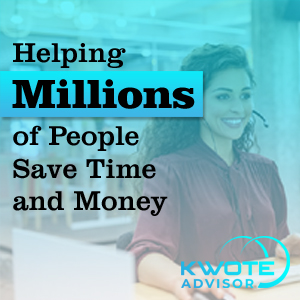
Open Top Containers: Buying Guide
Buying and Renting Open Top Containers 101
Open-top containers are a type of shipping container with a convertible top that can be completely removed to create an open area above the walls. Unlike standard shipping containers, which are fully enclosed, open-top containers are designed to hold and transport oversized, tall, or awkwardly shaped cargo that may not fit easily into a standard container.

The walls and floor of an open-top container are made from the same corrugated steel as a standard container, providing solid protection for the cargo inside. To protect against the elements, open-top containers typically come with a tarpaulin (also known as a “tilt”) that can be secured over the top. This cover is usually made from a heavy-duty material like canvas or PVC, and it is waterproof and wind-resistant to help protect the contents of the container.
Open Top Container Dimensions:
| Exterior L x W x H | Standard:20′ x 8′ x 8.5′ | High-Cube:20′ x 8′ x 9.5′ |
| Interior Dimensions | Standard:19’3″ x 7’8″ x 7’10” | High-Cube:19’3″ x 7’8″ x 8’10” |
| Door Space | Standard:7’9″ x 7’6″ | High-Cube:7’9″ x 8’6″ |
| Weight (Max Gross) | Standard:67,200 lbs. | High-Cube:67,200 lbs. |
The absence of a fixed roof allows for easier loading and unloading, particularly for bulky items like machinery, timber, or metal sheets. Cranes, forklifts, or other heavy lifting equipment can be used to load items into the container from above.
Open-top containers are available in various sizes, but the most common dimensions are similar to those of standard 20-foot and 40-foot containers. They are used for a variety of purposes including construction, mining, and other industrial applications where large or irregularly shaped items need to be moved. However, because of their specialized nature, open-top containers are generally more expensive to rent or purchase than standard containers.
7 FAQ’s About Open Top Containers
1. What Are Open-Top Containers Used For?
Answer: Open-top containers are primarily used for transporting oversized, tall, or awkwardly shaped cargo that wouldn’t fit easily in a standard container. They are commonly used in industries like construction, mining, and manufacturing to ship machinery, large equipment, timber, and metal sheets.
2. How Do You Protect Cargo in an Open-Top Container?
Answer: Open-top containers usually come equipped with a tarpaulin (tilt) cover made of heavy-duty, weather-resistant material like canvas or PVC. The tarpaulin can be securely fastened to cover the open-top area, offering some protection against rain, wind, and other elements.
3. What Sizes Do Open-Top Containers Come In?
Answer: Open-top containers are available in various sizes, but the most common are similar to standard shipping containers: 20-foot and 40-foot lengths. The internal dimensions may vary slightly due to the absence of a fixed roof.
4. How Are Items Loaded Into an Open-Top Container?
Answer: The lack of a fixed roof allows for easier loading from the top using heavy lifting equipment like cranes or forklifts. In some cases, items can also be loaded from the side if the container has doors on one of its longer walls.
5. Are Open-Top Containers More Expensive Than Standard Containers?
Answer: Generally speaking, open-top containers are more expensive to rent or purchase compared to standard containers due to their specialized nature. The cost can also vary depending on factors like condition, age, and availability.
6. Can Open-Top Containers Be Sealed and Locked?
Answer: Yes, open-top containers typically come with locking mechanisms to secure the contents. While the tarpaulin can be secured tightly, it’s worth noting that it may not offer the same level of security as a standard, fully enclosed container.
7. Is It Possible to Convert a Standard Container Into an Open-Top Container?
Answer: Technically, it is possible to convert a standard container into an open-top by removing the roof. However, this is a significant modification that may affect the structural integrity of the container. If you’re considering this, it’s essential to consult professionals for proper design and safety compliance.
How Much To Open Top Container Cost? Rent vs Buying
The cost of open-top containers can vary widely based on several factors, such as size, condition, location, and additional features. Here’s a general guideline for what you might expect:
Buying
- New: A new 20-foot open-top container may cost between $4,500 to $7,800 USD, whereas a 40-foot container can range from $6,700 to $10,000 USD.
- Used: A used 20-foot open-top container may be available for around $2,500 to $4,000 USD, and a 40-foot one could cost between $4,300 to $7,600 USD.
Additional Features: Costs can increase if the container needs to be customized with specific features like specialized locking mechanisms, flooring, or reinforced sides. Customizations can add hundreds to thousands of dollars to the total cost.
Renting
- Short-term: Renting a 20-foot open-top container might cost between $125 to $250 per month, and a 40-foot container can range from $175 to $350 per month.
- Long-term: For long-term rentals, you might be able to negotiate a discounted rate. Discounts could range from 5% to 15% off the standard monthly rate depending on the rental duration.
Delivery
- Local Delivery: If the container is being delivered within a short distance, you may pay between $160 to $500 for delivery.
- Long-distance: For longer distances, shipping costs can vary greatly but expect to pay upwards of $400-$500 to even a few thousand dollars depending on how far the container needs to go.
Please note that these are just estimates and prices can vary widely based on location, availability, and specific needs. Always get a detailed quote from suppliers for the most accurate pricing information.
Types of Open Top Containers
Open-top containers come in various forms to cater to different cargo needs. While they all share the common feature of an open top for easy loading and unloading, they differ in dimensions, materials, and specific design elements. Here are some types of open-top containers and their descriptions:
1. Standard Open-Top Container
- Description: These are the most commonly used open-top containers and closely resemble standard shipping containers, but without a fixed roof. They are typically made from corrugated steel and come with a removable tarpaulin (tilt) cover.
- Common Sizes: Usually available in 20-foot and 40-foot lengths.
- Use Case: Suitable for general-purpose, oversized or tall cargo.
2. Hard-Top Open-Top Container
- Description: Similar to standard open-top containers, but these come with a removable hard-top roof instead of a tarpaulin cover. The hard-top roof is often made of steel and is secured with nuts and bolts.
- Common Sizes: Primarily available in 20-foot and 40-foot lengths.
- Use Case: Used for heavy-duty cargo that may require additional protection from the elements or potential impact.
3. Open-Top Flat Rack Container
- Description: These containers have open sides and an open top, essentially offering a flat rack for cargo. The walls at the front and back are typically fixed, providing some enclosure.
- Common Sizes: Generally available in 20-foot and 40-foot lengths.
- Use Case: Ideal for extremely heavy or oversized cargo like machinery or vehicles that exceed standard dimensions.
4. Open-Top High Cube Container
- Description: Similar to the standard open-top container, but with extra height for taller cargo. They also come with a removable tarpaulin or hard-top cover.
- Common Sizes: Usually available in 40-foot lengths, with heights exceeding 9 feet.
- Use Case: Used for transporting tall items that require extra vertical space.
5. Open-Top Half-Height Container
- Description: These are shorter than standard open-top containers and often made with more robust materials like reinforced steel.
- Common Sizes: Typically smaller than standard containers and can range from 10-foot to 20-foot lengths.
- Use Case: Mainly used for heavy, dense cargo like minerals, metal scraps, or heavy machinery parts.
6. Open-Top Reefer Container
- Description: These are refrigerated open-top containers used for transporting perishable goods that also require easy top-loading.
- Common Sizes: Generally available in 20-foot and 40-foot lengths.
- Use Case: Used for items like large trees, plants, or specialized perishable goods.
7. Open-Top Tank Container
- Description: These are specialized open-top containers designed to carry liquids, gases, or granulated materials.
- Common Sizes: Often customized to specific requirements.
- Use Case: Mainly used in the chemical and food industries for transporting bulk liquids.
Each type of open-top container has its own advantages and drawbacks, and the right choice will depend on the specific needs of your cargo. Always consult with a shipping expert to determine which type of open-top container is best suited for your requirements.
